Hard Disk Music
Centre
"Project Ashoka"
 November
2009 (and 2011 updates at the bottom)
November
2009 (and 2011 updates at the bottom)
(pictures
are
googled and stolen, I will make my own - later.)
In 2011,
encouraged by my experiments, resulting in Project Antalya and some
serious research of how Squeezebox works, I decided to offer fully
hot-rodded SQB in the form of Lampizator
Transport . Long story short: the transport
offers everything we need apart from DAC to build state of art digital
system based on a computer and hard drive storage.
The project originally even had a name: Project Ashoka, co commemorate
one of the
greatest kings who ever lived, the first one to adopt non violence,
religious tolerance, buddhism, protection of animals, setting up
national parks and nature conservation plan - and he did it all - over
2250 years ago in India. Thats when Poles were still living up on the
trees, as did most of our neighbors. I thought that Ashoka is a guy who
deserves a few lines here. I just learned about him from Michael Wood.
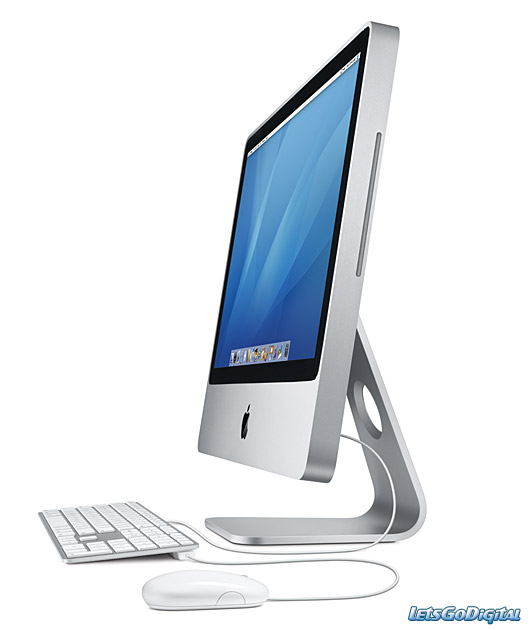
For those who
think that I have gone completely mad and lost the plot -
I am rushing to explain:
1. I am not
selling any of my values - tube sound remains the best one,
and hand made cheap gear still rules in the mad world of 40 000
Euro boxes.
2. Going towards
HDD has nothing to do with the MP3 or iPod revolution
- I strictly stick to the 16 bit 44 kHz signal, and Lampizator is still
in the centre of my system.
What I want to
achieve is to have better faster, easier, more
interesting access to the CD's that I own and in practice never listen
to. I have THOUSANDS albums but I listen to 100 or something. Just
because my brain asks for the favourites, and the hundreds and hundreds
of gems that I own - collect dust. Browsing through iTunes seems so
much easier.
So - here we are
- I decided to put all CDs on hard disk. Easier said
than done.
First - we must
find a good machine for creating files from silver
disks. In my case it is my beloved iMac. It rips CD to AIFF with 9x
speed - circa 7 minutes.
Second - we must
choose file format. The lossless WAV is no good
because Mac OS hates it and because iTunes refuses to attach CD covers
to WAV files.
FLAC was
rejected because MAC does not support it (yet).
The file which
works with Mac, with Windows, with Squeezeboz and with
Squeezecenter too is AIFF - a lossless Mac format, a good compromise.
Next comes the
selection of Hard Disk. I did not want to use internal
disk of the Mac, so I decided to buy a separate HDD box with own
motherboard, own LAN card, own Linux embedded firmware and OS. Unlike
the USB disks - this one works and plays music without a need for any
computer. It is a stand alone media server, which has two HDD
slots. I made a RAID mirror to keep the data safe. Shall one HDD fail -
simply replace it with the new one, the second one will still work. No
need to make backups (almost)
I chose the
cheap and popular D-Link Media Server model DNS323. It
cost
in Poland 200 Euro and it has all that I need. After setting it up
(only by a Windows computer) it starts being a true server, which can
do files, web, FTP, and it can even have mail exchange and fixed ip
address (to host a web site !!!). It is seen by the MAC just as a disk.
We can attach a name to it via DNS and call it up from any browser like
a web address. Those of you more IT or IP educated will be thrilled
knowing that you can PING the box too !!!
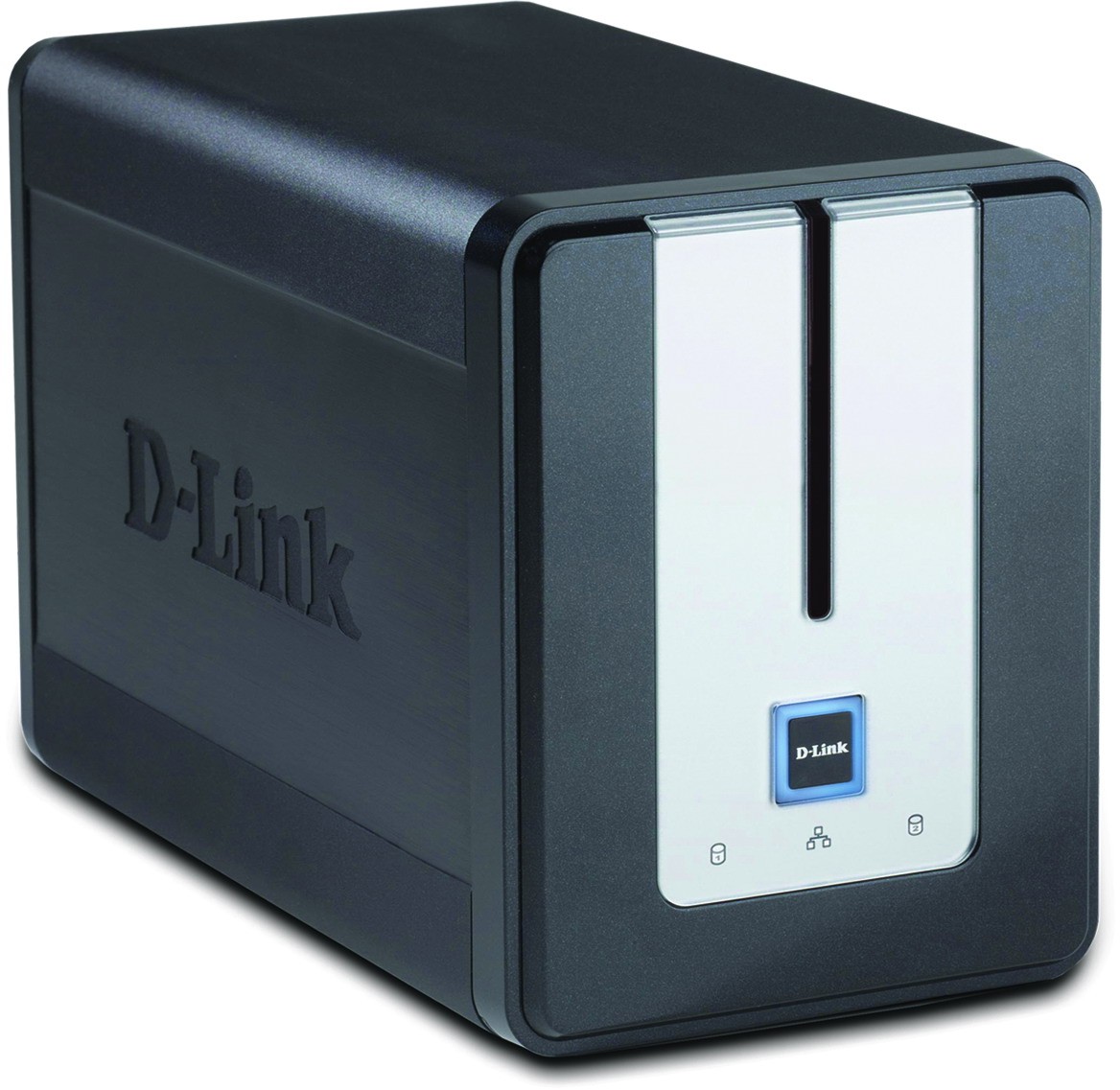 what you can't see is
that this
enclosure is METAL. Not plastic.
what you can't see is
that this
enclosure is METAL. Not plastic.
In the meantime
I had a major crisis - my Seagate 1T disk crashed after
one month of feeding it with CDs. I LOST EVERYTHING. At that time I had
only one HDD in the D-Link box - I was planning to add second disk
later. So I learned the hard way that:
Seagate is
generally low reliability disk (not only the Barracuda
1T/7200
version 11, but also the supposedly better version 12.)
I consulted many
HDD repairmen and their common advice was: for this
application use ONLY ONE TYPE OF DISK: Western Digital Green Line.
It is slow, cold
and silent as a stone. It is designed for 24/7 heavy
duty operation and in fact - I own two 1,5T disks - they are waaayyyy
better than Seagate Barracuda. The superiority of WD is just laughable
(for what I need it for).
With my two
disks 1,5 TB (110 Eu each) I have a 1,5T Raid mirror,
giving me space for circa 2500 CDs. The beauty of the RAID solution is
that we don't need to worry to EXTRACT AND SAVE THE DATA when the disc
crashes. We just get the new one under warranty - and the old one goes
in the dustbin.
BUT
the big but is
that in case of a fatal catastrophe - like thunder
strike, a fire, or major LAN catastrophe - probably BOTH disks in RAID
will fail.
So - dear reader
- here comes an interesting solution: first RAID and
then - when CDs are loaded - do a backup onto a single USB standalone
HDD 1,5T (or whatever you have). Put this one in your bedroom drawer,
not connected, not used. Just refresh the backup once a month when you
add new music. Otherwise - don't use it for anything else. To protect
it
from fire - keep it in a different home or at the office.
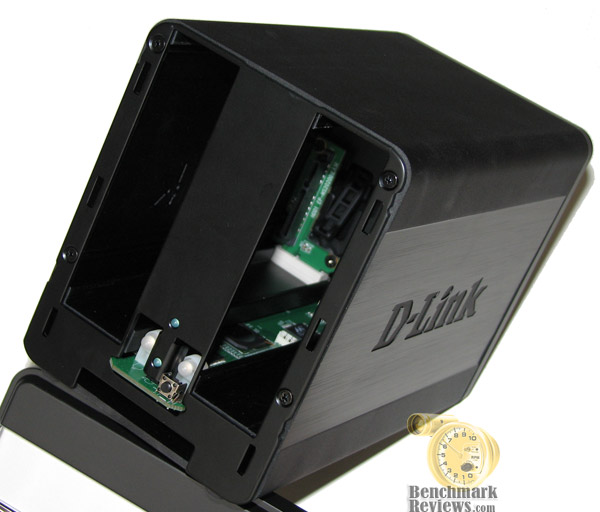
Here comes the
system diagram:
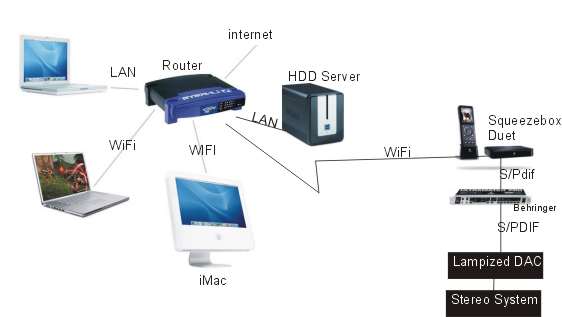
As you can see -
this system links by Squeezebox
to our high-end stereo. The HDD box is in my case hidden in the walk-in
closet, connected by LAN to the wifi router and from the router - to
the Squeezebox. We can play not only the music from HDD,
but also from internet radio. Other
family members can access the system from any laptop, ipod, iphone etc.
I access it from Playstation3 as well. You can store the photos too,
and view them on TV via the Playstation. iPhone can become a remote
controller, wireless and with CD cover function. However - the
iPhone or iPod can not initiate playback of the Squeezebox. Only the
dedicated Squeezebox remote can do this.
The iPhone , iPod or Playstation can acess the database, play the song
on computer, play them on the Playstation, see covers, etc.
Of course if you have MP3 collection - it will be seamlessly visible on
that system. Together with WAV. AIF, etc.
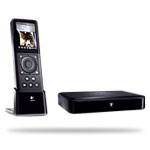
I don't have an
iPhone, but Squeezebox remote has colour display with
the
CD cover function, and it is WiFi compatible too.
My iMac (when
the Daughter is not photoshoping like mad) is excellent
for CD browsing - the covers are nearly the size of an LP and I can
find any song in less than 5s via search function.
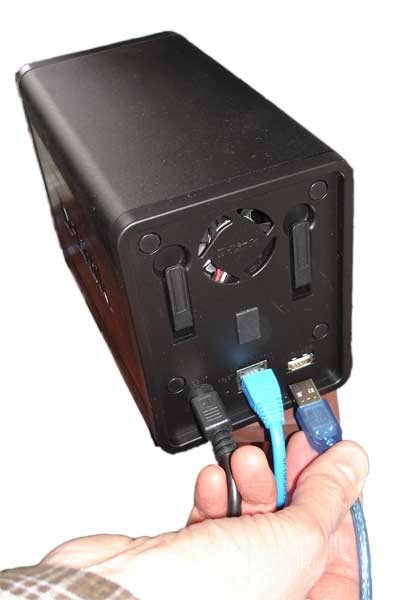
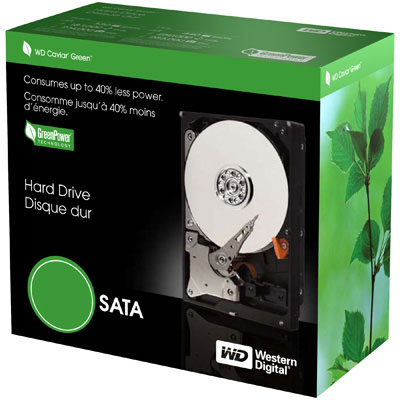
HERE COMES THE
GOOD NEWS:
I tested the
Squeezebox as an S/PDIF transport source driving the
Lampizator DAC and I compared it to the
same dac driven by
a Sony transport and also the same dac but BUILT IN the lampized Denon
DCD2560 player. The Squeezebox solution sounds better than any of the
above traditional solutions. How come that it sounds better - I don't
know. It sounds wider, deeper, with more air, more information, more
musical, more enjoyable.
YES FOLKS - to
have the convenience of the Squeezebox system we don't
need to compromise on sound. We can still look in the mirror in the
morning.
The Squeezebox
transport s/pdif signal SOUNDS BETTER THAN CD
TRANSPORT. And that is the news of the year for me.
THe final
checklist and pricelist:
1. HDD Raid
server D-Link DNS323 = 200 Eu
2. Two HDD
Western Digital Green Line 1,5TB = 240 Eu
3. Linksys or
D-Link wifi router - 50 Eu (plus external longer
antenna)
4. Squeezebox
Duet with wireless colour screen remote = 300 Eu (SQB
remote (I mention it because it costs 250 Eu) is optional if if
you have the iPod (new generation of the Touch) or iPhone (any
generation). The iPod / iPhone must be able to connect to the computer
and access the iTunes library files to browse the HDD Server. Then it
can become the ultimate remote controller with finger touch CD cover
browsing etc.
5. A computer,
preferably iMac because it is silent and can be
permanently on in the listening room. Another cool option is HP Touchsmart with
screen that does the finger browsing.
6. The high end
DAC like Lampizator DAC or simply - a good DAC full stop.
The rest of the
system is as usual.
7. As a cool
option I would add the Behringer upsampler, maybe even
the one with Ultracurve - the digital equalizer function. It would go
between the Squeezebox S/PDIF output and the DAC input.
That ladies and
gentlemen will be a real 21st century system which will
satisfy the most critical audiophiles and finally will allow our
significant others and the kids too to participate. Everybody can play
whatever they love - and enjoy great sound - no more daddy shouting
DONT TOUCH THE STYLUS !!!
What the hell - since it sounds better - we can simply spend this
roughly one grand Euro for the whole thing simply as a good transport
instead of a Levinson.
UPDATE: MAY 2011
WHICH SQUEEZEBOX?
Any SQB will be good - Classic, Duet, and of course the highend
Transporter or the newest Touch.
My research shows that Duet is the best platform for DIY and Touch is
the best "untouched" (LOL) meaning - in stock form.
Duet is generally a hardware solution, based on good simple chips.
Touch is baser on very rich firmware and own OS which some people
modify or even remove and replace.
Touch, using tools known to me - is impossible to tweak - it is so
tightly mounted and packed.
Even if the Touch theoretically plays higher density formats : 24/192
versus 24/88 of Duet, the tweeaked Duet a'la my Transport beats Touch
seriously on sound quality even from 44/14 files versus the highest
format of the touch.
How to build a HDD system in our home
I start from the simplest one, going to the most sophisticated.
The base of the system is unchanged on all levels of sophistication:
the HDD must simply be loaded with music files, regardless of the
choice of formats.
Hard disc that I still recommend as the best is Green Western Digital,
1,5TB or 2TB. Greens are the best for our needs.
Files like FLAC are the best if you use Squeezebox, the only downside
is incompatibility with the MAC OS. But FLAC will play perfectly on MAC
OS if we simply don't use iTunes and rely on free software
Squeezecenter provided by Logitech.
1. Level 1 - simplest system:
Our HDD is connected tyo any computer - laptop, netbook, mac - anything
- via USB port. Output to DAC is via: USB for the machines which don't
have optical TOSLINK port like almost all Windows PC machines
or
In case of ALL Apple machines (mac mini, macbook, iMac - there is a
Toslink hidden inside the headphone port. Just buy a special optical
cable with mini-jack on one end and Toslink on the other end (some
cables have additional mini-jack adapter) and plug it directly into
DAC. (all Lampizator DACs can be ordered with Toslink input).
This way we can use MAC machine as a transport. Sound quality is
somewhere around 6 out of 10 but still VERY GOOD.
I bought my cable from company VITALCO for 5 Euro.
A variation of this would be an USB output (all computers) connected
via an interface USB-> Coax SPDIF.
A well known interface is HiFace from M2Tech. It comes in two variants:
simple "pendrive" one and more costly varoiant of the same thing in a
larger box and separate PSU. Mac reads it without any additional
drivers. This way any computer, even 5 years old dying laptop can serve
as a GUI, server and OS in one box. Laptops are good because they have
keyboard, mouse, screen , OS and Squeezewcenter all in one piece.
Silent (most of them).
2. Levcl 2 - one step up
We can move the HDD away from the computer and have it in separate box.
It can be an old computer (especially silent fanless one) installed as
network node and we access the HDD from another GUI computer or ipad /
ipod or netbook. The music server can be permanently ON and it will not
share tasks with our main laptop. Nothing else is installed there
(except maybe a movie and photos separate HDD. The file server can be
based on simplified Linux system. My favorite solution would ne mac
mini - at 699 USD new - it is a steal. Cheap, reliable, silent and
small. Access it from preferablt the iPad. What a cool system.
3. Level 3 - remote server on dedicated platform
Q-Nap is the best system that has own Linux dedicated especially
to the task we need - serving music, movier and graphic files. Q-Nap
does EVERYTHING and is super hi-tech. People who used Q-Nap dont want
to hear about anything else. It rips the CDs in the background, manages
backups, updates music database, manages cover artwork, and stays
invisibly cold and silent on the home network, maybe in the closet.
4. As the above but with Squeezebox or Lampizator Transport as the
interface from the HDD system to our music rig. Squeezebox has great
sound quality, the firmware is updated periodically from Logitech
website, it works with any solution - Windows, Linux, Q-Nap, MAC or any
combination of the above, as long as Squeezebox is on the same LAN -
wireless or UTP.
5. Level 5 is based on PC or MAC with the dedicated SOUND CARD that is
a professional and expenceive music centre. The best cards have AES/EBU
output and offer endless possibilities of signal manipulation:
upsampling, downsampling, oversampling, volume control, phase control,
multichannel, etc. The die hard fetishists of dense music formats (even
above 24 bits and above 192 kHz ) use this kind of system. The price
tag for these cards is above 1000 Euro. I have no first hand experience
so I will leave it up to you to search Google and read more.
Once again - how can a "stupid" computer modem like Logitech sound
better than reputable real CD transport ? Computers are supposed to be
BAD.
I will try to explain how I see it, because I cant hive a 100% accurate
answer to that except that it REALLY DOES:
Just imagine: It takes 70 minutes for the Philips CDM2-Pro mechanism to
read all data from CD disk. The same amount of data is read by DVD
drive in 7 minutes. PC drive DVD/RW will take 3 minutes. Blue Ray reads
it in half minute. Hard drive reads it in 4 seconds. RAM buffer reads
it in less than a second. MY SQB PLAYER plays from RAM buffer.
The Data from CD must be read by a laser, which constantly needs to
adjust focus, servo adjusts linear speed of motor, and track tracking.
The data is demodulated from laser waves, and missing bits or errors
are interpolated and corrected.
The HDD Lampizator Transport player needs nothing of that. Perfect,
100% accurate data is fed to RAM buffer and just (FIFO) - sent
out to DAC according to precision clock.
This scenario is 100 x more simple, errofr free and accurate. I am
surprized that CD players play anything at all ;-)
WIFI OR LAN ?
According to my experience, WIFI or LAN have the same sound quality via
Squeezebox because RAM buffer liquidates all problems retated to WIFI
(latency, pauses in transmission, etc).
The proposed dream system
Data storage: 4 pieces of 500 GB chip SSD drives installed on 4-bay
Q-nap server
Lampizator Transport and Level 4 Lampizator DAC
Linxys WiFi network
Samsung Netbook as GUI
Or
Data storage: 4 pieces of 500 GB chip SSD drives installed on 4-bay
RAID box of any kind
MacMini as Squeezebox Center
iPad as GUI (coolest remote controller in existence)
Lampizator Transport and Level 4 Lampizator DAC
Linxys WiFi network
Apple TV and Air Port are inferior solutions compared to Squeezebox.

 what you can't see is
that this
enclosure is METAL. Not plastic.
what you can't see is
that this
enclosure is METAL. Not plastic.



